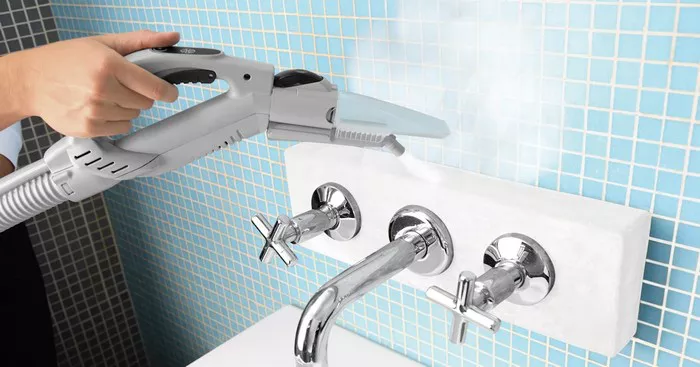Keeping your bathroom clean is essential for hygiene and comfort. Among various cleaning methods available, steam cleaning has gained popularity for its effectiveness and eco-friendliness. But is steam cleaning suitable for your bathroom? Let’s delve into the details to help you make an informed decision.
Understanding Steam Cleaning
Steam cleaning utilizes hot vapor to disinfect and clean surfaces. It is highly effective in removing dirt, grime, and even some types of bacteria and allergens. The process involves a steam cleaner that heats water to produce steam, which is then directed through a nozzle onto the surface to be cleaned.
Benefits of Steam Cleaning for Bathrooms
Effective Cleaning without Chemicals: One of the significant advantages of steam cleaning is that it eliminates the need for chemical cleaners. The high temperature of steam is often sufficient to break down and remove stubborn residues like soap scum and mineral deposits.
Kills Bacteria and Germs: Steam cleaning is known for its sanitizing power. The heat from the steam can kill many types of bacteria and germs on bathroom surfaces, providing a more hygienic environment.
Versatility: Steam cleaners come with various attachments that make them versatile for cleaning different surfaces in the bathroom. From tiles and grout to faucets and shower doors, steam cleaners can tackle a wide range of cleaning tasks.
Environmental Friendliness: Since steam cleaning uses only water vapor, it is an environmentally friendly cleaning option. It reduces the use of chemicals that can be harmful to both your health and the environment.
Reduces Allergens: Steam cleaning can effectively remove allergens such as dust mites and mold spores, which can be prevalent in bathrooms. This is particularly beneficial for individuals with allergies or respiratory issues.
Types of Surfaces Suitable for Steam Cleaning
Not all surfaces in the bathroom are suitable for steam cleaning. It is important to consider the material and finish of the surface before using a steam cleaner:
Tiles and Grout: Steam cleaning is highly effective for cleaning ceramic and porcelain tiles, as well as the grout between them. The steam helps to dislodge dirt and grime from the porous grout lines.
Glass Shower Doors: Steam can effectively remove soap scum and water stains from glass shower doors without the need for harsh chemicals.
Faucets and Fixtures: Chrome and stainless steel fixtures can be safely cleaned with steam to remove water spots and fingerprints.
Sealed Surfaces: Surfaces that are sealed or water-resistant, such as sealed stone countertops, may be suitable for steam cleaning. Always check the manufacturer’s recommendations before using a steam cleaner on sealed surfaces.
Precautions and Considerations
While steam cleaning offers many benefits, there are some precautions and considerations to keep in mind:
Heat Sensitivity: Avoid using steam cleaners on heat-sensitive materials such as unsealed wood, wallpaper, or delicate surfaces that can be damaged by heat or moisture.
Safety Precautions: Steam is extremely hot and can cause burns. Always follow the manufacturer’s safety instructions and use caution when handling a steam cleaner.
Ventilation: Ensure adequate ventilation when using a steam cleaner in a bathroom to prevent moisture buildup, especially in enclosed spaces.
Regular Maintenance: Steam cleaning is most effective as part of a regular cleaning routine. It may not be suitable for extremely heavy buildup or neglected areas.
See Also: Can I Steam Clean a Fabric Sofa?
How to Steam Clean Your Bathroom
If you decide to steam clean your bathroom, here are some general steps to follow:
Preparation: Remove any items from the bathroom that you do not want to expose to steam, such as towels or rugs. Sweep or vacuum the floor to remove loose dirt and debris.
Fill the Steam Cleaner: Fill the steam cleaner with water according to the manufacturer’s instructions. Plug in the steam cleaner and allow it to heat up.
Begin Cleaning: Start with larger surfaces such as tiles and shower walls. Hold the steam cleaner nozzle a few inches away from the surface and move it in a slow, controlled motion.
Focus on Grout: Direct the steam into the grout lines to help dislodge dirt and mildew. You may need to use a small brush attachment to agitate the grout and improve cleaning effectiveness.
Clean Fixtures and Accessories: Use appropriate attachments to clean faucets, showerheads, and other bathroom fixtures. Wipe down with a microfiber cloth to remove any loosened dirt or residue.
Dry Surfaces: After steam cleaning, use a dry microfiber cloth to wipe down surfaces and remove any remaining moisture.
Ventilate the Room: Open windows or turn on a ventilation fan to help dry out the bathroom and prevent moisture buildup.
Maintenance: Regularly steam clean your bathroom as part of your cleaning routine to maintain cleanliness and hygiene.
Conclusion
In conclusion, steam cleaning can be a highly effective and environmentally friendly method for cleaning your bathroom. It eliminates the need for harsh chemicals while effectively sanitizing surfaces and reducing allergens. However, it is important to consider the material and finish of the surfaces you intend to clean, as well as follow safety precautions to avoid damage or injury.
By understanding the benefits, suitable surfaces, precautions, and proper techniques for steam cleaning, you can make an informed decision on whether steam cleaning is right for your bathroom cleaning needs. Always refer to the manufacturer’s instructions for your specific steam cleaner model and consult with professionals if you have any concerns about using steam cleaning in your bathroom.

